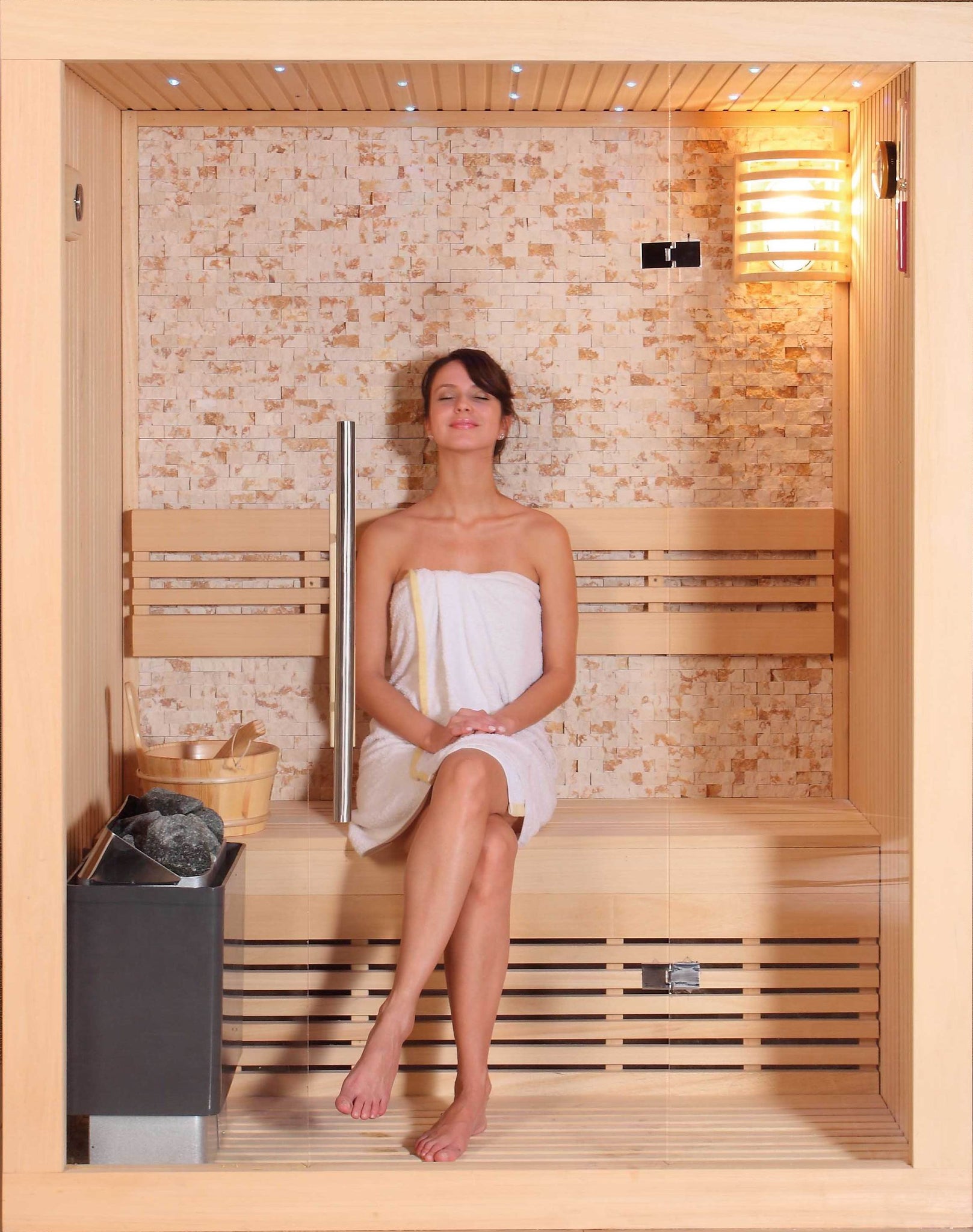Traditional Sauna Fundamentals Explained
Traditional Sauna Fundamentals Explained
Blog Article
The Ultimate Guide To Traditional Sauna
Table of ContentsNot known Facts About Traditional Sauna8 Easy Facts About Traditional Sauna DescribedNot known Factual Statements About Traditional Sauna Traditional Sauna - An Overview
The majority of the weight lost in a sauna is water loss and is re-gained upon rehydrating. Without a doubt sauna can be a vital component of a healthy and balanced weight loss program. To consider the differences in between typical and IR saunas, I will certainly separate these right into verifiable, academic, and produced differences.Hence, the most popular point in the saunawhich is at the ceiling straight above the sauna heateris normally between 185 and 190 F. Traditional Sauna. Claims that a traditional sauna goes beyond 200 F is just not true and not appropriate for electrical saunas offered in the United States. The temperature for a far-infrared sauna is typically set in between 120 and 140 F; nevertheless, unlike the standard sauna, the goal in and IR space is not to achieve a high temperature level
Due to this, the temperature difference is virtually pointless, because profuse sweating causes both sauna types, but the technique of heating the body is various. In an IR sauna the bather will really feel warm and will sweat profusely, yet at a lot lower temperatures. Therefore, if the goal is to invest longer amount of times in the sauna, the IR sauna is a great selection.

Traditional Sauna Can Be Fun For Everyone
When the high temperature is attained, the components cycle on and off to keep the heat. Most conventional sauna customers delight in putting water over the rocks to produce vapor to increase sauna humidity degrees. The advantages of pouring water over the rocks include: making the area a lot more comfortable, moistening the nasal passages, and permitting the use of aromatherapy by blending crucial oils with the water.
In a far-infrared sauna, the heat waves permeate the body to effectively heat the body and raise the body core temperature. To achieve this boosted temperature level, Far-infrared emitters create infrared energy which is close to the exact same wavelength as that which the body normally emitsoften referred to as the "Crucial Array" of 7 to 14 microns), so the power is well obtained by the body.
When the energy gets in the body, it causes the body temperature to boost and inevitably causes sweating. In an infrared sauna it's vital for the emitters/heaters to remain on practically continuously. Considering that there is no mass of rocks to retain heat, the sauna will certainly cool if the emitters shut down.
As mentioned above, the sauna bather in an infrared room wants to position article source himself before running emitters to obtain optimal take advantage of the warmth. The home heating time for the two rooms can be really various, relying on how the spaces are utilized. For a conventional sauna, a bather ought to enable 30-40 minutes for the room to attain a desired temperature and to appropriately pre-heat the rocks.
The Only Guide to Traditional Sauna
A well built sauna will commonly attain a temperature of 150-160 F in concerning 30-40 minutes. For hotter temperatures, the room great post to read might require to warm for a longer period.
To some, 15 minutes was "lost" while the infrared energy warmed the wood panels instead of heating a body, while others find a pre-heated area to be a lot more comfortable and believe a raised beginning temperature level is essential to begin sweating. The size of advised usage for every space is about the same (10-15 minutes per session); nevertheless, as a result of the reduced air temperature levels and the capability to really feel the impacts of infrared warm quicker than a typical sauna, it is not uncommon for a person to spend a total of 20-30 minutes in an infrared sauna.
Typical saunas have a tendency to be larger (hence utilize even more electrical power) than infrared saunas, although standard saunas are certainly offered in one and two person dimensions as well. For a two-person conventional sauna, 5x6 or 5x7 size is most popular. The top bench can comfortably seat 2 or three individuals and is also long enough to relax throughout the sauna session.


The average expense per kWH of electrical power in the U.S. is approximately $0.11, so a 4.5 kW heating system will set you back about $.50 to run for one hour, if the heating unit runs continuously for one hour. Generally a sauna heating unit will certainly run for 75% of the very first hour and 50% of succeeding hours on given that the aspects cycle once the set temperature level is attained.
Traditional Sauna for Dummies
A 2 person far-infrared space is normally physically smaller sized than a typical sauna, typically concerning 4' x 4' or smaller sized. The IR home heating system is normally 1.5-1.7 kW using learn this here now a 120 volt 15 amp plug-in solution. Considering that the space can be made use of faster than a sauna space, we will certainly assume the area is utilized for to of an hour consisting of warm up time.
There is a seldom gone over difference in the social experience in between the two rooms. While our society has shed several of the social benefit of the standard sauna experience, it can be really socially gratifying. From family time in the sauna, to heart-felt discussions with loved ones, to sauna partiesthe typical sauna experience can result in intimate interacting socially.
A lot of higher end infrared rooms include tinted light treatment, noise systems and full-glass fronts.
Report this page